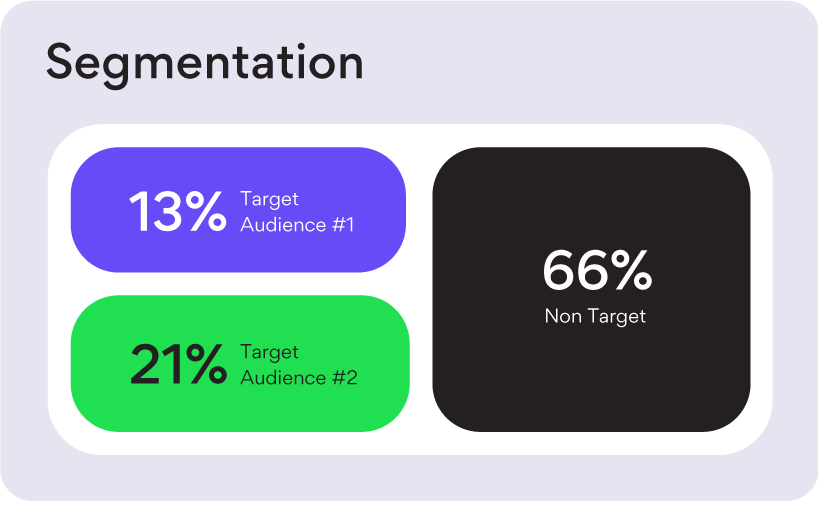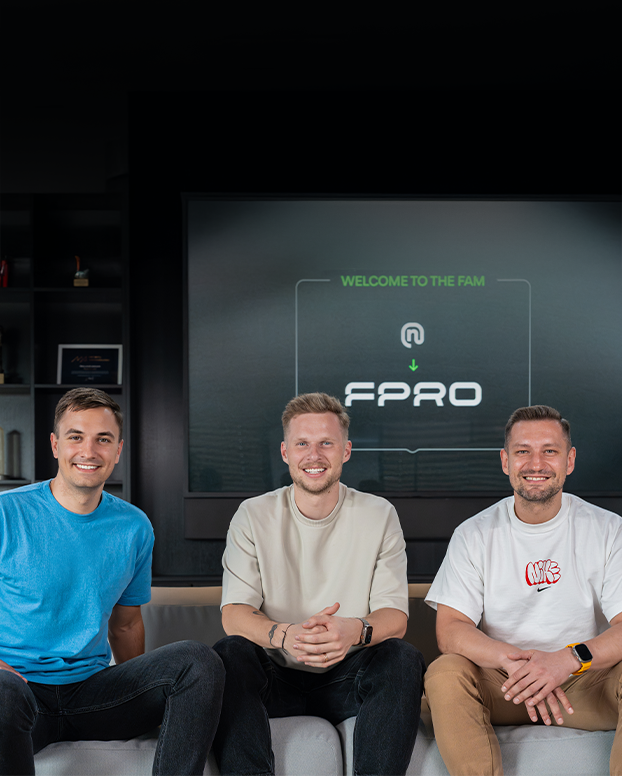
Getting started with segmentation for your startup
August 3, 2023•6 mins read
Product-market fit. From partners, mentors, and investors, this is a phrase that every new entrepreneur hears a lot. And with good reason. Finding product-market fit is essential to your startup’s success.
Yet many startups still struggle with this area. And one of the reasons is misapplying (or just completely overlooking) segmentation when building their target audiences.
According to Miglė Andrulionytė, Head of UX Research at NordPass’, effectively segmenting the market is an essential step in the process of creating a target audience and, ultimately, finding product market fit. “When segmentation is done right, you get validation that the problem you’re solving is real,” explains Miglė. “Plus, you can quantify this problem and see if there is a market there.”
We caught up with Miglė to learn more about the importance of segmentation and how startups can get started with it. With over a decade of experience in market research and customer insight and an endless curiosity for making brands better, she was the perfect person to talk to about:
- What is the relationship between segmentation and target audiences,
- What segmentation adds that is so important,
- How to do segmentation effectively,
- And how to create a survey.
What is the relationship between target audiences and segmentation?
For starters, let’s clarify exactly what we are talking about. What is a target audience, what is segmentation, and where do these two intersect?
“A target audience is a specific group that has similar attitudes, pain points, and potential,” says Miglė. “In other words, this is a small group of customers that a brand wants to target.”
“Segmentation, meanwhile, is the process of creating an overall view of all the different audiences within a market, and then defining potential target audiences and non-audiences.”

Brands must think about segmentation as well as target audiences
According to Miglė, what is crucial for startups to understand is that segmenting the market is an essential step – you can’t just rely on defining a target audience.
“Every entrepreneur understands the concept of a target audience, and most have probably conducted an interview or two,” she explains. “But this is not the full story. Target audiences tend to be narrow and handpicked. Worse still, many teams are more dedicated to creating a detailed persona profile rather than understanding the bigger picture.”
“Adding segmentation to the mix addresses this problem,” Miglė continues. “Segmentation provides you with a market map and helps you understand every aspect of your target audience. It can reveal underserved needs that could be a potential stepping stone for new ideas and products.”
What happens when you only focus on a target audience?
The case of mobility technology company Segway illustrates precisely why understanding and segmenting your audience is so important, says Miglė.
“They talked with a group of enthusiasts who loved their product and assumed that this would be sufficient for a target audience,” explains Miglė. “However, they overlooked the fact that there might not be a large number of people willing to pay $5,000 for a hefty two-wheeled device.”
In other words, they defined a target audience without properly understanding how large it was or where it fitted within the market as a whole.
That is not to say target audiences don’t matter. It is just that they are only one side of the coin, argues Miglė. “Ultimately, it’s not a choice between one or the other. A solid strategy requires both a clear market map and a well-defined target audience.”

How startups should segment their market
Given the importance of segmentation, startups must be thorough and detailed in their approach, says Miglė. The bare minimum is to find answers to these 4 questions:
1. How big is the market?
“With consumer products, this process is a bit easier than with B2B,” says Miglė. “In both cases, you will need to gather knowledge and then run a survey to understand the scale of the market.”
2. What is the purchasing power of customers in this market?
“This is about having the right combination of questions in your surveys. You need to find out their spending power, get an understanding of their past purchases, and identify their willingness to pay for certain types of products.”
3. What are the preferences and needs of customers in this market?
“The key is to ask people about what they are doing NOW – this focus on the present is super important. I have noticed that a lot of product managers and developers love to ask customers about the future – ‘would you be interested in X?’ or ‘do you plan to do Y?’. But if you want better accuracy, focus on what they are actually doing now.”
4. What potential is there for expansion within this market?
“To estimate the potential for expansion, look out for segments that could work as a secondary target audience. This process of secondary audience development can happen when that group is strongly influenced by your primary target audience. For example, this happens when early adopters set trends that more mainstream customers then follow. It could also be down to some unmet needs this secondary target audience has.”
How to craft your survey for effective segmentation
So, you have the 4 main questions you need answers to. Now it’s time to create a survey to gather the answers you need.
Because you are analyzing a large market, you will be relying on surveys rather than in-depth qualitative interviews (you might use these when crystallizing your target audience). And Miglė has some practical suggestions on how to create your survey.
“Preparation is key. So don’t rush the initial stage of putting together your surveys. Unlike qualitative research, surveys are not very flexible, and you can’t add anything once it’s completed. So don’t shy away from sketching a rough image of potential outcomes and potential segments. This will help you craft the right statements for your survey.”
Useful statements for your survey
In terms of statements, Miglė has some handy recommendations for statements you can use to effectively segment an audience with your survey.
“Some examples of segment statements I think are effective include:
- I frequently make impulse purchases.
- I’m more inclined to the latest models.
- I usually wait for reviews before buying a new product.
- Ease of use is more important to me than a product’s advanced features.
Just remember that your statements will vary depending on the product, and you should include more specific ones as well.”
An essential step in achieving product-market fit
Miglė‘s overall message is clear – segmentation is vital if you want to create a product that truly matches a market and its needs. It empowers you to make fundamental decisions about your fledgling business and how it will grow.
“Ultimately, segmentation is about understanding the whole potential market and then figuring out where you want to focus,” Miglė explains. “After all, choosing where not to play is also part of a good strategy.”
Read more like this
-
Growth
November 18, 2025•3 mins read
London Lions complete first phase in plan for new London arena
-
Growth
August 31, 2023•5 mins read
Tips and best practices for segmenting markets
-
Growth
October 22, 2021•4 mins read
9 ways to hack the global growth
-
Growth
March 4, 2021•8 mins read
Top 10 books to feed your techy mind






